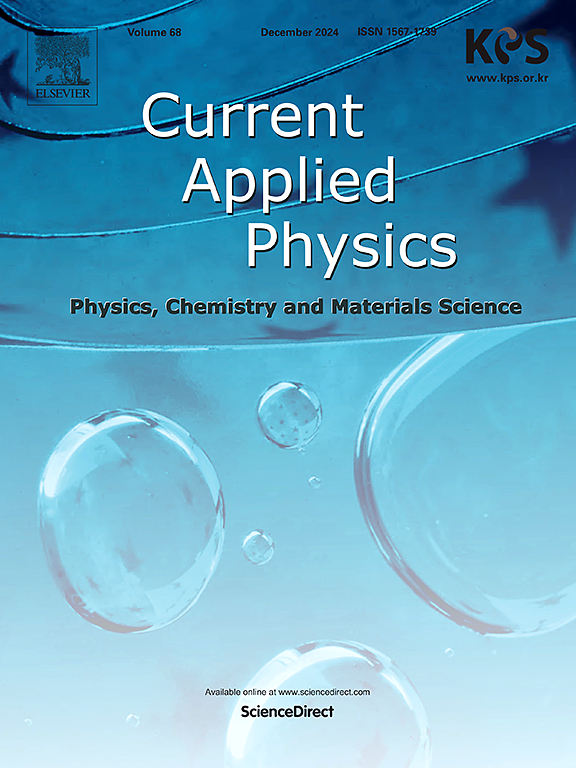Luminescent sensing carbon dots by using different portions of disposable face mask for recycling without waste
IF 3.1
4区 物理与天体物理
Q3 MATERIALS SCIENCE, MULTIDISCIPLINARY
引用次数: 0
Abstract
The spread of the covid-19 caused an increase in the consumption of disposable mask. Most of the used disposable masks are buried in the ground and incinerated. In case of the burial, disposable masks take longer than hundreds of years. In case of the incineration, a large amount of greenhouse gases generate. It affects global environmental pollution and human. Herein, we represent a method to synthesize carbon dots through recycling parts (non-woven, melt-blown, and non-woven/melt-blown) of disposable masks without mask residues. The prepared carbon dots have a size about 3.5–4.0 nm and blue region emission. As a result of fluorescence data, carbon dots mixed with Fe3+ ion display quenching effect due to several oxygen groups. Those interact coordination interaction with Fe3+ ions which affects possibility of nonradiative recombination, thus generating quenching effect of fluorescence. Thus, the recycled carbon dots can be applied to several fields (metal sensing and anti-counterfeiting).

利用一次性面膜的不同部分进行发光感应碳点回收,不浪费
随着新型冠状病毒感染症(covid-19)的扩散,一次性口罩的消费量有所增加。大部分使用过的一次性口罩都被埋在地下焚烧。在埋葬的情况下,一次性面具需要数百年以上的时间。如果焚烧,会产生大量的温室气体。它影响着全球环境污染和人类。本文提出了一种通过回收一次性口罩的部分(无纺布、熔喷、无纺布/熔喷)合成碳点的方法。所制备的碳点尺寸约为3.5 ~ 4.0 nm,具有蓝色发光。荧光数据表明,掺杂Fe3+离子的碳点由于存在多个氧基团而表现出猝灭效应。这些相互作用与Fe3+离子的配位相互作用影响了非辐射复合的可能性,从而产生荧光猝灭效应。因此,再生碳点可应用于多个领域(金属传感和防伪)。
本文章由计算机程序翻译,如有差异,请以英文原文为准。
求助全文
约1分钟内获得全文
求助全文
来源期刊

Current Applied Physics
物理-材料科学:综合
CiteScore
4.80
自引率
0.00%
发文量
213
审稿时长
33 days
期刊介绍:
Current Applied Physics (Curr. Appl. Phys.) is a monthly published international journal covering all the fields of applied science investigating the physics of the advanced materials for future applications.
Other areas covered: Experimental and theoretical aspects of advanced materials and devices dealing with synthesis or structural chemistry, physical and electronic properties, photonics, engineering applications, and uniquely pertinent measurement or analytical techniques.
Current Applied Physics, published since 2001, covers physics, chemistry and materials science, including bio-materials, with their engineering aspects. It is a truly interdisciplinary journal opening a forum for scientists of all related fields, a unique point of the journal discriminating it from other worldwide and/or Pacific Rim applied physics journals.
Regular research papers, letters and review articles with contents meeting the scope of the journal will be considered for publication after peer review.
The Journal is owned by the Korean Physical Society.
 求助内容:
求助内容: 应助结果提醒方式:
应助结果提醒方式:


